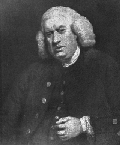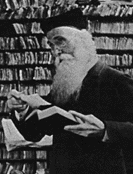Emily Dickinson Lexicon
FREQUENTLY ASKED QUESTIONS
Basic instructions for using the Emily Dickinson Lexicon:
1) If you wish to search for a particular word, type that word into the white search box near the top of the webpage on the right hand side. Then click on the word that appears in light blue type. If the word has more than one part of speech, click on the form you wish to select.
2) Or, go to the third tab, that says “EDLexicon” and click on it. It opens to the letter “A”. Choose a letter of the alphabet from the line of letters at the top. The line of numbers below the letter shows the number of pages in that letter. You can estimate where you want to go by clicking on a page near the beginning, middle, or end of the range.
Why are there different numbers of occurrences in the reference lists for a single word that belongs to different parts of speech? For example, the reference list for slow, adv. is shorter than the reference list for slow, adj.
The number of occurrences in a reference list will vary because of the inflectional endings given in parentheses after each entry. For example, the entry for slow (-er), adv. has 61 occurrences in its reference list, including an occurrence of “slower” with the adverbial meaning of “more slowly.” However, the adjective list for slow (-er, -est), adj. has 63 occurrences, including occurrences of the inflected form “slowest” which does not appear as an adverb meaning “most slowly.”
What is the scholarly citation format for the Emily Dickinson Lexicon or for the renovated 1844 Webster dictionary?
The citation format may differ depending on the style guide. The basic citation information is as follows: Scholarly citation for the EDL: Hallen, Cynthia, ed. Emily Dickinson Lexicon. Provo, Utah: Brigham Young University, http://edl.byu.edu/index.php, 2007. Scholarly citation for the ADEL: Hallen, Cynthia, ed. Renovated Online Edition of Noah Webster’s 1844 American Dictionary of the English Language. Provo, Utah: Brigham Young University, http://edl.byu.edu/index.php, 2009.
Why Emily Dickinson?
Quantity: Dickinson wrote over 1,789 poems from 1850-1886. She wrote over 1,046 letters from 1842-1886. The collected poems contain over 9,275 unique words and nearly 100,000 word occurrences.
Quality: Dickinson tells the truth, but she tells it “slant” (J1129/Fr1263) with allusions, ambiguities, circumlocutions, definitions, humor, irony, and riddles. Her poetic diction has a scriptural basis with more biblical allusions than any other source. Her texts present elevated language, moral values, theological questions, and epic themes, like the writings of Isaiah, William Shakespeare, Sor Juana Inés de la Cruz, and Neal A. Maxwell.
Manner: Dickinson wrote in nineteenth-century American English, a neglected area in the history of the English language. She inherited the Indo-European bard tradition from the Classical Track at school. She wrote lyric poetry instead of common prose: the tongue of the gods vs. the tongues of men. Her language is aesthetically marked vs. unmarked in all major language areas: phonology, prosody, morphology, syntax, semantics, lexis, pragmatics. Her lexical craft includes antithesis, idioms, kennings, metaphors, polysemy, puns, symbols, and synonymy.
Relevance: Dickinson lived in Amherst, Massachusetts, from 1830-1886, during a religious revival and a philological renaissance. Her period of greatest poetic productivity (1858-1865) coincided with the Civil War. She used Noah Webster’s 1844 American Dictionary of the English Language (ADEL) as part of her poetic composition. Her life span was contemporary with the development of the Oxford English Dictionary.
Basic instructions for using Noah Webster's 1844 American Dictionary of the English Language:
1) Go to the fourth tab, that says “Webster” and click on it. It opens to the letter “A”. Choose a letter of the alphabet from the line of letters at the top. 2) The line of numbers below the letter shows the number of pages in that letter. You can estimate where you want to go by clicking on a page near the beginning, middle, or end of the range. 3) If you wish to search for a particular word, type that word into the white search box near the top of the webpage on the right hand side.
Why Noah Webster?
Noah Webster experienced a spiritual conversion and dedicated his scholarly works to the glory of God. Webster worked on his 1828 edition of the ADEL in Amherst, Massachusetts, from 1812-1822. He was a proponent of education for women. Webster worked with Dickinson’s grandfather to establish educational institutions, including Amherst Academy and Amherst College. The last edition of the ADEL that Webster worked on before his death in 1843 was published by the Adams Brothers of Amherst in 1844. In 1844 Edward Dickinson purchased Webster’s rare final edition of the ADEL. Webster’s granddaughter Emily Elizabeth Fowler Ford was a school chum of Emily Dickinson. Emily's brother Austin recalled seeing “Webster's big dictionary” on the kitchen table of the Dickinson home (Sewall 1965, p. 12). Martha Dickinson Bianchi reported that her aunt Emily read the dictionary “as a priest his breviary” or book of daily devotions (1932, p.80). Buckingham and Benvenuto documented Dickinson’s use of Webster 1844 dictionary.
Why a Lexicon for Dickinson's Poems?
An Emily Dickinson lexicon will enable us to translate the complete poems of Emily Dickinson into as many languages as possible; will provide a searchable database that can enhance scholarly research in literary and linguistic forums; will create a concise tool that documents the semantic complexity of Dickinson’s usage; will facilitate the slow reading and philological interpretation of individual poems for readers of Dickinson; will train students in the art and science of lexicography through a hands-on real world apprenticeship.
Just as there are tools for Shakespeare studies (Murray’s 1930 Oxford English Dictionary; Schmidt’s 1902 Shakespeare Lexicon and Quotation Dictionary; Spevack’s 1973 Harvard Concordance to Shakespeare), we need tools for Dickinson studies:
• Rosenbaum’s 1964 Concordance to the Poems of Emily Dickinson. Ithaca, New York: Cornell University Press. • MacKenzie’s 2000 Concordance to the Letters of Emily Dickinson. University Press of Colorado. • Webster’s 1844 An American Dictionary of the English Language. 2 vols. Amherst, Massachusetts: J.S. & C. Adams Brothers. • Hallen’s 2007 Emily Dickinson Lexicon, web ed. Provo, Utah: Brigham Young University.
Why publish the Dickinson lexicon online?
Even before the internet became available, I knew that the EDL would have an electronic edition, because of the CD edition of the Oxford English Dictionary, and the WordCruncher scripture concordance program developed by Monte Shelley and James Rosenvall at Brigham Young University. Harvard University Press granted permission for us to scan Dickinson’s poems and letters into a WordCruncher concordance database, 1994. The advent of the internet, email, html, and websites enhanced the EDL project and hastened the electronic edition, 1995-2000. Undergraduate student Jennifer Shakespear created the prototype EDL website for her "Computing in the Humanities" course on web publishing in 2000. Electronic publication saves the EDL files from data management problems that had plagued the project due to WordPerfect upgrades and Word downgrades, 1992-2005. Mel Thorne of the Humanities Publication Center recommended electronic publication as the cutting edge forum for a project of this type, size, and scope, 2004. Graduate student Russell Ahlstrom offered to create a fully-equipped EDL website for his MA project, including a digital copy of Webster’s 1844 dictionary, 2006. Advances in technology and web design make online publication of the EDL a logical, practical, accessible, versatile choice, 2007. Web publication provides more than convenient distribution: it expedites the editing, revising, and proof-reading of the files in preparation for a print edition, 2008. The electronic databases can interface with the work and projects of others scholars and institutions, 2009. The website format consolidates the resources needed for on-going contributions to the EDL project: poems, references, Webster entries.
What is a lexicon?

The word “lexicon” is a synonym for a dictionary or word list, like Samuel Johnson's dictionary or Noah Webster's dictionary. Sometimes a "lexicon" is a bilingual dictionary, for example, one of Dickinson's textbooks was A new and copious lexicon of the Latin language by Frederick Percival Leverett (1839). The word “lexicon” can also refer to a specialized dictionary for the works of a particular author or the words used by a particular audience. In linguistic terminology, the word “lexicon” refers to the total inventory of word forms and morphemes in a language or in the mind of a speaker. Photo credit: earlywomenmasters.
Who are some of the greatest lexicographers in the history of the English language?
Samuel Johnson

Compiler of A Dictionary of the English Language (DEL, 1755, 1799).
Prayer, 25 July 1776: O God, who hast ordained that whatever is to be desired should be sought by labour, and who, by thy blessing, bringest honest labour to good effect, look with mercy upon my studies and endeavors. Grant me, O Lord, to design only what is lawful and right; and afford me calmness of mind, and steadiness of purpose, that I may so do thy will in this short life, as to obtain happiness in the world to come, for the sake of Jesus Christ our Lord. Amen. (Boswell, James. Life of Johnson. London: Oxford Univ., 1924, 64-65.)
Noah Webster

Author of the American Dictionary of the English Language (ADEL, 1828, 1841, 1844).
Preface, 1841: To that great and benevolent Being, who, during the preparation of this Work, has sustained a feeble constitution, amidst obstacles and toils, disappointments, infirmities and depression; who has borne me and my manuscripts in safety across the Atlantic, and given me strength and resolution to bring the Work to a close, I would present the tribute of my most grateful acknowledgements. And if the talent which he intrusted to my care, has not been put to the most profitable use in his service, I hope it has not been kept laid up in a napkin; and that any misapplication of it may be graciously forgiven. (Webster, Noah. An American Dictionary of the English Language. New Haven, 1841, viii.)
James A. H. Murray

Chief editor of the Oxford English Dictionary (OED, 1930, 2008).
Testimony, 1 August 1891: I never could have stood the work that I have done at the Dictionary, and the special difficulties which threatened at times to overwhelm me without earnest prayer every morning for help to do my work; And many a time, unknown to anybody, when absolutely at the end of my own resources in dealing with entangled and difficult words, when all alone in the Scriptorium, I have shut the door, and thrown myself upon the floor absolutely on God's help, and asked him to use me as an instrument to do what He knew to be right; and I believe I have never asked in vain. There are many articles in the Dictionary which could never have been done by me without this earnest and sometimes agonized appeal to higher wisdom to inspire me with fresh effort. (Murray, K. M. Elisabeth. Caught in the Web of Words: James Murray and the Oxford English Dictionary. Oxford Univ., 1977, 308-09.)